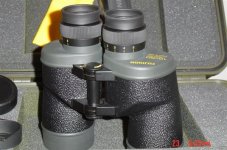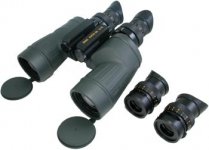If it's foolish for a relatively unknown binocular brand like Fujinon to make porros (which, btw, I disagree with, Fuji/Fujinon brand names are widely known, but their binoculars are not well known in the birding circles since here-there-to they've only produced two lines of birding bins of note, the BFL porros and CD roof models, neither of which really caught fire),
ipso facto, it would also be foolish for them to make roofs for the same reason (Fuji who?).
Nay, even more foolish, because if their outsourced clones stink, that's the first impression birders are going to get about Fuji, and probably the last.
However, if Fuji put out an original, innovative, high quality product, reviewers will liken that product to what is already known in some circles as the best marine bins made. Oh, yeah, THOSE guys. Hey, they KNOW optics.
If Zen Ray, Vortex, and Hawke can come out of nowhere with no history in the birding market and catch fire by producing an innovative product, then it should be even easier for Fuji, but the clones aren't it.
Although there is a great demand for roofs, the affordable priced roof market is saturated, and there's already good product out there, so Fuji would have to make a "better Ford" to compete.
It's not just about
demand, it's also about
competition. It remains to be seen, but IMO, the Fuji clones are spaghetti that's not going to stick.
As far as the big brands, to go back to Peter Drucker's quote, they made innovations in the roof design that has earned them big bucks.
On the surface it might seem foolish for them to make a 360 and start making innovations to the nearly extinct porrosauruses, but lets focus in a little closer.
Roofs were inferior optically to porros, because of the inherent light loss due to the roof prism design, so making p-coatings (Zeiss) and then perfecting them to 99.99% reflectivity was their chief innovation. Without that, they couldn't compete with porros, which don't need p-coatings.
They also improved light transmission through multilayer AR coatings and fine tuned them to create better color saturation and contrast, and then used high quality glass, which even in blank form, costs more than entire mid-priced bins cost.
Mechanically, they also created innovations with internal focus, on-the-focus diopters, click-stop, twist-up eyecups, and nitrogen purging.
From there it's been "one small step for roofs, one giant step for prices". Water repellent coatings, ED glass, etc., all driving prices higher and higher. How much of this $ goes back into R&D and how much into the pockets of the top execs, I'd like to know.

I've been on the soap box about this for about two years with my "Incremental Change$ for Diminishing Return$" campaign. The Big Three have milked roofs for all their worth (and then some).
Making a high quality porro that incorporate most of these innovations (some have already trickled down), now that would be something new in today's market.
But as long birders are willing to pay through the nose for incremental changes, why bother? So they keep pulling on the teat.
OTOH, Fuji has prided itself in making some the best porros available, albeit with IF and MT chassis. So it makes more sense for them to build on what they've already done rather than trying to reinvent the wheel so they can follow the leader(s). And they know this, that's why they aren't making new roofs, but just re-branding Chinese clones.
Dear Mr. Fuji, Make some CF porro protoypes. Test market them (send one to me to review) and put a stop to this Chinese clone copycatting, because it's not going anywhere and might even hurt your brand name.
Iggy P.






